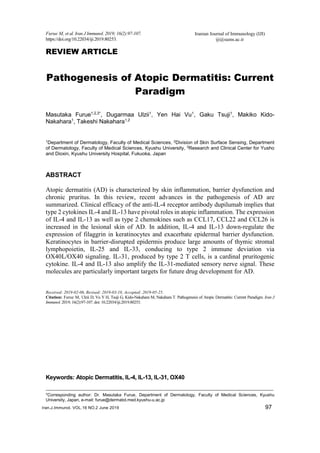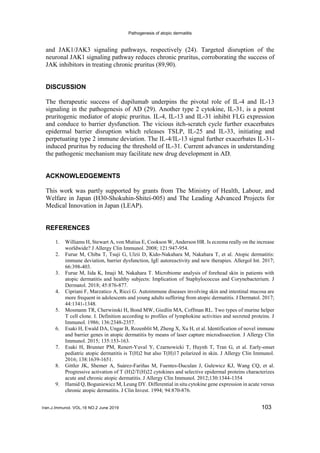This document summarizes recent research on the pathogenesis of atopic dermatitis (AD). It discusses how (1) type 2 cytokines like IL-4 and IL-13 play a pivotal role in AD inflammation as evidenced by the effectiveness of the anti-IL-4 receptor antibody dupilumab; (2) these cytokines downregulate filaggrin expression, exacerbating skin barrier dysfunction; and (3) keratinocytes and type 2 immune cells activate each other, perpetuating inflammation through cytokines like TSLP, IL-25, IL-33 and IL-31.










